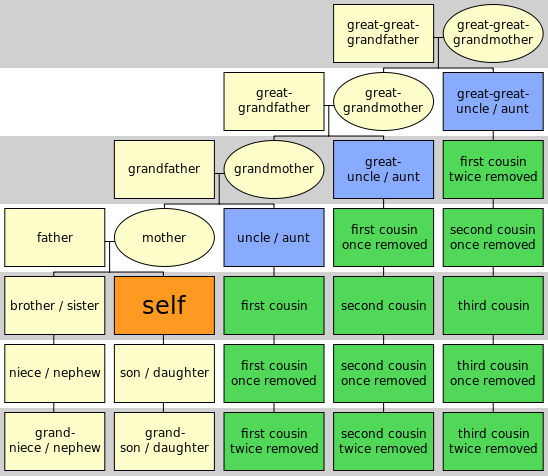SANTA FE, N.M. — He is bamboo-thin, relies on a pair of walking sticks to help him up a canyon trail, and has lost most of his vision. But at age 88, Stewart Udall, patriarch of the first family of the American West, politics division, has seen enough history to recognize a Big Moment when it’s staring back at him.
“I think we’re moving into a new era,” he said. “There’s something very pleasing and hopeful going on, a resurgence after a long drought of positive conservation sentiment.”
 Stewart Udall at his home in Santa Fe, N.M. (Credit: AP Photo/Jeff Geissler)
Stewart Udall at his home in Santa Fe, N.M. (Credit: AP Photo/Jeff Geissler)He was talking about love of land and passion for place, and how it can crystallize in a political shift once every generation or so. For Udall, one of only two surviving members of President John F. Kennedy’s original cabinet, that time first came with the 1960 election.
Doors opened. Fresh ideas were aired. And from Udall’s long tenure as secretary of the interior for both Kennedy and President Lyndon Johnson came a legacy of public land protection responsible in large part for so many wilderness areas just outside Western cities.
Now, the son also rises. And so does the nephew.
Udall’s next-door neighbor in the 400-year-old city of Santa Fe, his son Tom, a Democratic congressman, has a huge lead in the polling on who will become New Mexico’s next United States senator, in the seat being vacated by the Republican Pete Domenici. Udall’s nephew Mark, a Democratic congressman from Colorado, is a slight favorite in the open senate race in that state, for the seat opened by the retirement of Republican Wayne Allard.
Two new Democratic senators — first cousins from a family that dates to early Mormon settlers in the Southwest — does not an earthquake make. But New Mexico also has three open Congressional seats, and the presidential campaigns will spend a lot of time here in the Land of Enchantment as well.
If the West does prove to be the gateway to the presidency this year — with at least three purple states in play — the campaigns could do no better than to look at polyglot New Mexico.
Urban and wild define the New West — fast-growing cities nestled in Wallace Stegner’s “geography of hope.” The art, the history and the food of New Mexico have been commoditized, for obvious reasons. But many of its special places are intact, and owned by every American because of the Wilderness Act, which dates to the fertile years of Stewart Udall’s reign as the emperor of the outdoors.
Mark Udall has climbed every one of Colorado’s 54 peaks over 14,000 feet (and has come within 3,000 feet of the summit of Everest). Tom Udall is the driving force behind legislation that saved the spectacular Valle Vidal in northern New Mexico from the predations of Dick Cheney and his allies.
Not so long ago, when Western Democrats wanted to caucus, “it was sometimes my cousin Tom and I having a beer,” Mark Udall told Outside Magazine. Now Democrats are poised to own the West, or so goes the heady talk here at 7,000 feet.
Mountain Democrats found their way in part by rejecting the excesses of coastal Democrats, and by looking at what worked for their elders, like Stewart Udall and his brother, the late Morris Udall. The Udall name is written deep into the salmon-colored canyons and mesas of the Southwest, as prominent as a petroglyph. The family traces its lineage to John D. Lee, who was shot by a firing squad as a scapegoat for the slaughter of 120 settlers by a Mormon militia in 1857.
The leaders of the Mountain Meadows massacre were never held to account. Instead, John Lee, who was treated like a son by the Mormon patriarch Brigham Young, was offered up to the government for his role in the execution-style killings of men, women and children.
“I have been sacrificed in a cowardly, dastardly manner,” said Lee, just before the blindfold was slipped over his eyes. His last words were: “Center my heart, boys. Don’t mangle the body.”
From Lee, who married 11 women, came the Udall dynasty, which also includes the current Republican senator from Oregon, Gordon Smith, a distant cousin of Tom and Mark.
“I don’t like the term dynasty,” said Stew Udall in our interview. “We’re Westerners and small-town people.”
The bolo-tied elder in the adobe house is modest about his influence. “The Bush Administration has all by itself created a backlash,” he said. “They’ve been anti-science, and anti-environment.” That backlash, plus a longing for a clean break with the energy policies of the past, are what make him think Democrats can ride an ascendancy of ideas into office in the fall.
Republican opponents of the Udall cousins, by contrast, show how that party has faltered. The nominee in Colorado, Rep. Bob Schaffer, has been trying to explain a junket to the Mariana Islands partly arranged by the firm of the disgraced lobbyist Jack Abramoff. Pictures show him parasailing while supposedly investigating labor practices. In New Mexico, Republicans just chose as their senate candidate Rep. Steve Pearce, whose hard-right rigidity is a poor fit for this year and this state.
Stewart Udall was a child in the still-frontier West of the 1920s; he struggled through the Great Depression, and fought the Nazis in World War II. Reflecting on his long life recently, he wrote a message to his grandchildren.
“The lifetime crusade of your days must be to develop a new energy ethic to sustain life on earth,” he wrote. “Cherish sunsets, wild creatures and wild places. Have a love affair with the wonder and beauty of the earth.”
His intention was to give the kids something to outlive him. He didn’t need to worry. The legacy is already there, in the land and the love affair that brought him to it.
------------------------
From the Udall Foundation:
The Early Years
About Stewart L. Udall
Visit the University of Arizona's Stewart L. Udall Collection.
Stewart Udall’s remarkable career in public service has left an indelible mark on the nation’s environmental and cultural heritage.
Born in 1920, and educated in Saint Johns, Arizona, Udall attended the University of Arizona for two years until World War II. He served four years in the Air Force as an enlisted B24 gunner flying fifty missions over Western Europe for which he received the Air Medal with three Oak Leaf Clusters. He returned to the University of Arizona in 1946 where he played guard on a championship basketball team and attended law school. He received his law degree and was admitted to the Arizona bar in 1948. He married Erma Lee Webb during this time. They raised six children.
Udall rapidly became prominent in Democratic Party politics in Tucson and Arizona. He was elected to the U.S. House of Representatives as a Democrat in District 2 from Arizona in 1954. He served with distinction in the House for three terms on the Interior and Education and Labor committees.
In 1960 President Kennedy appointed Stewart Udall Secretary of Interior, where his accomplishments during eight years under Presidents Kennedy and Johnson earned him a special place among those ever to serve in that post and have made him an icon in the environmental and conservation communities. Upon Udall’s recommendation President Kennedy asked former U.S. Poet Laureate Robert Frost to read an original poem at his inauguration, establishing a precedent for that occasion. It was the first among an enormous list of achievements by Udall. Some highlights:
His number one best-selling book on environmental attitudes in the U.S., The Quiet Crisis (1963), along with Rachel Carson’s Silent Spring, is credited with creating a consciousness in the country leading to the environmental movement.
Udall oversaw the addition of four parks, six national monuments, eight seashores and lakeshores, nine recreation areas, 20 historic sites and 56 wildlife refuges to the National Park system.
During Udall’s tenure President Johnson signed into law the Wilderness Act, the Water Quality Act, the Wild and Scenic Rivers Act and National Trails Bill.
Stewart Udall helped spark a cultural renaissance in America by setting in motion initiatives that led to the Kennedy Center, Wolf Trap Farm Park, the National Endowments for Arts and the Humanities, and the revived Ford’s Theatre.
He is a recipient of the Ansel Adams Award, the Wilderness Society’s highest conservation award, and the United Nations Gold Medal for Lifetime Achievement.

















